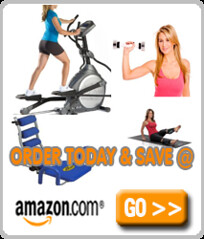Exercising in the water is a wonderful way to workout. Water is a fascinating medium for strength training, cardiovascular workouts, balance training, sport-specific exercise, and rehabilitative exercise.
Water provides resistance in multiple directions. It works muscles on both sides of a joint during the same movement. For example, in the water, a typical bicep curl will make both the biceps and triceps do work. Walking in water is double the workload of walking on land, if the same speed is maintained. Water provides twelve times the resistance of air. With the lungs submerged in the water, breathing is more difficult and strenuous, as the lungs must be inflated against pressure.
Sports Fitness
Those exercising in the water can perform plyometric exercises without the impact of doing them on land. They can also perform sport-specific skills, especially balance and agility drills, without the fear of falling.
Trainers and therapists who put their clientele in the water can work on the following: aerobic conditioning, strength and muscle toning, joint range of motion, proprioception and balance, core stabilization, posture, and functional exercise. Clientele who respond very well to aquatic exercise include those with arthritis, knee or hip replacements, spinal fusions, carpal tunnel syndrome, osteoporosis, pregnant women, and those needing stroke rehabilitation.
Athletes looking for a good cross-training workout also respond well to aquatic exercise. Runners and triathletes can get a workout with less impact on their joints. The client does not need to know how to swim to be able to train in the water.
There are some differences found in water exercise that those unfamiliar with it need to be aware of. When working out in water, an exercisers heart rate will be lower, but the cardiovascular benefits will be the same as when working on land. This is due to two reasons. First, water dissipates body heat more effectively than air; therefore there is less stress on the body. Secondly, due to water's hydrostatic pressure and decreased gravity when in the water, blood flow is less stressful on the body, so it becomes easier for the body to pump blood back to the heart. Despite these factors, the cardiac output (CO) is the same as working on land.
Exercising in water produces some less thought of benefits for pregnant women. The hydrostatic pressure of the water provides improved circulation, which leads to decreased pain, discomfort, and severity of varicose veins that form during pregnancy, as well as relieving some of the discomfort associated with increased swelling in the body. Exercising in water helps correct some of the postural problems associated with pregnancy. Pregnant women are also able to do abdominal exercises easier in the water than on land. They are able to move with more grace and agility in the water, which increases their self-image and makes them feel better about themselves.
Stroke survivors also benefit greatly when working out in the water. They are able to work on range of motion, strength, flexibility, and coordination. They are also able to work on posture, balance, coordination, and gait without the risks of falling. Aquatic rehabilitation reduces pain and stiffness and increases a stroke survivor's ability to relax. It increases mobility and strength for transfers and ambulation, as well as increasing self-esteem and confidence. Water provides resistance without needing to grip a weight or a band, if the patient has lost grip strength due to their stroke.
Water exercisers should be aware of some of the properties of a decreased-gravity environment in order to get the best workout. If the water is at waist height, fifty percent of one's body weight is supported by the water. At the chest, it is seventy-five percent. At the neck, it increases to ninety percent. The higher the water level, the less control one will have over his motions. In general, women will float easier than men because they carry more adipose tissue, especially in their hips. Athletes with more lean tissue in their legs will also have a harder time floating. Increasing the difficulty of movements is done by changing one or more variables: speed of movement, utilization of the surface tension of the water, increasing the lever length, changing the water depth, or changing the plane of the movement.
Water exercise can benefit anyone, whether they are athletic or not. By knowing the basic properties of water and how it can benefit your specific problem, exercisers, therapists, and trainers can add a new tool to their tool chest. The possibilities are endless!
Aquatic Exercise Benefits Everyone!






